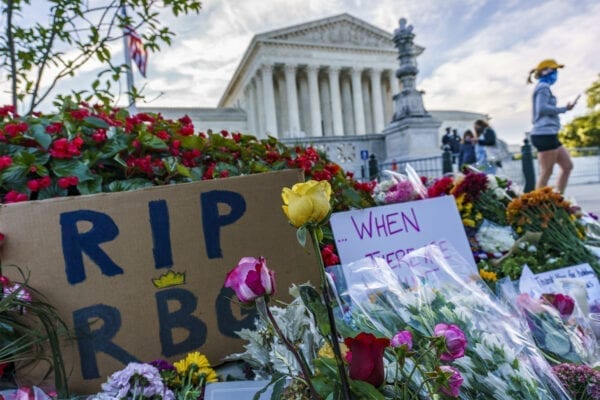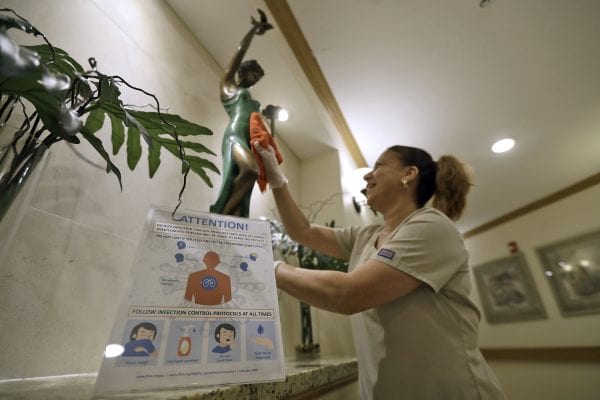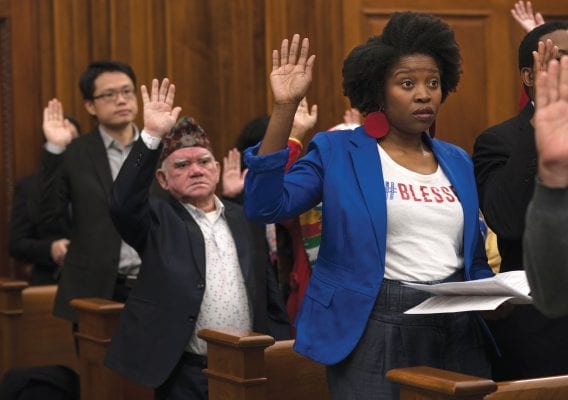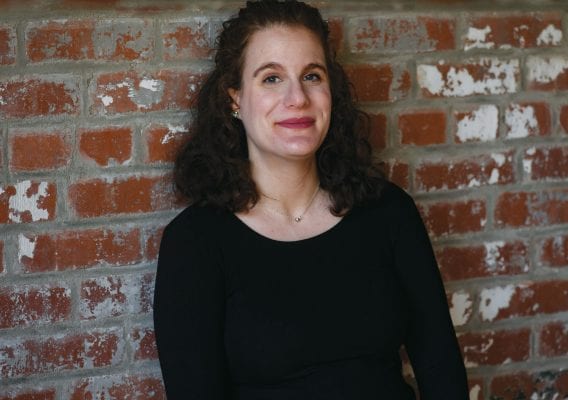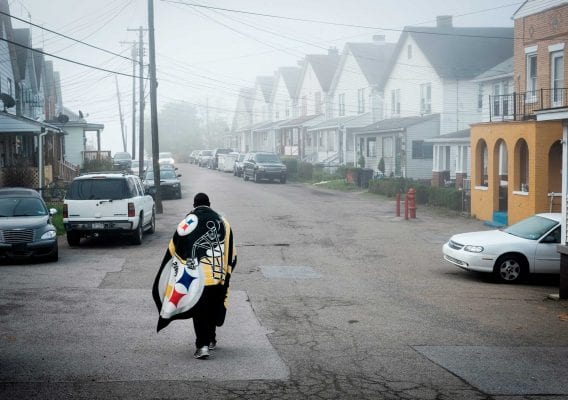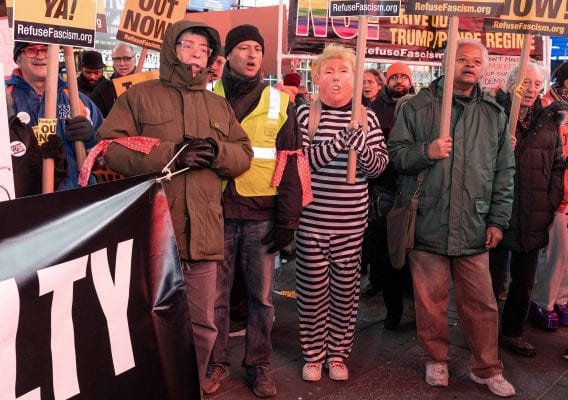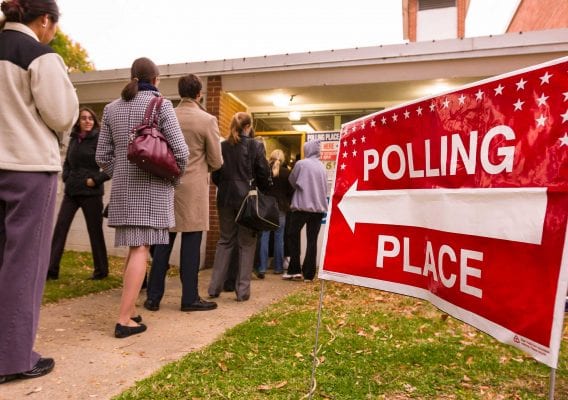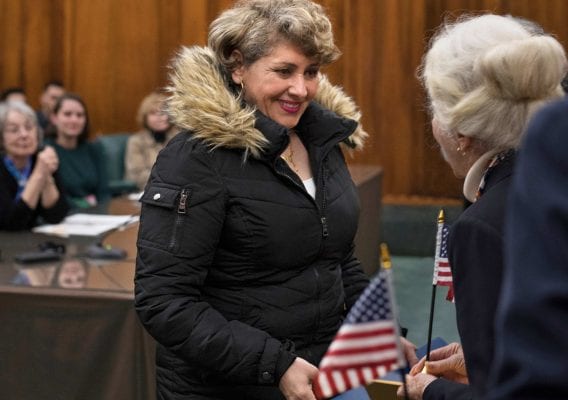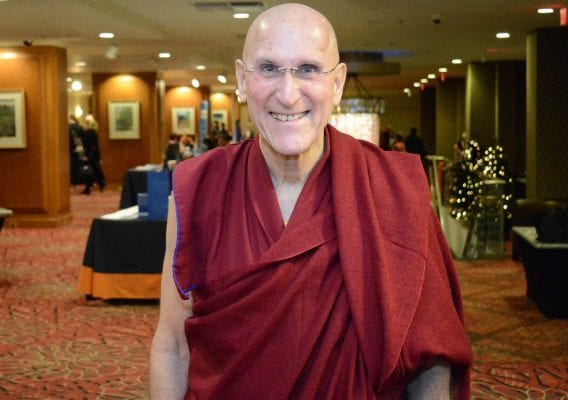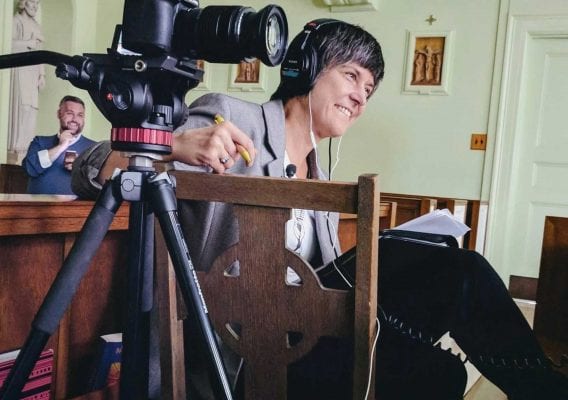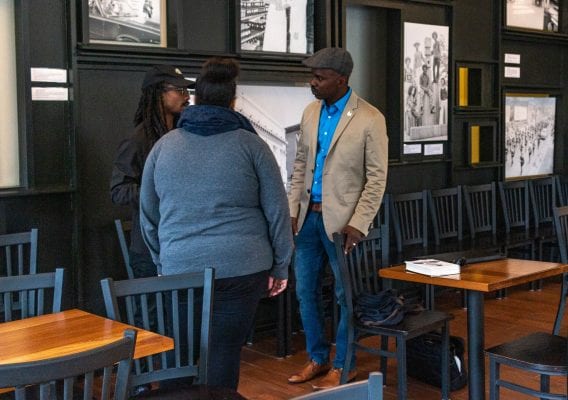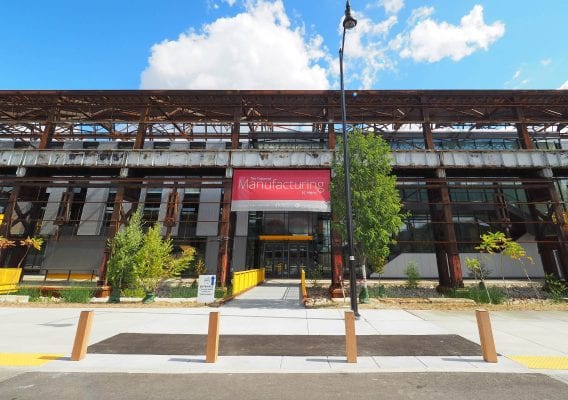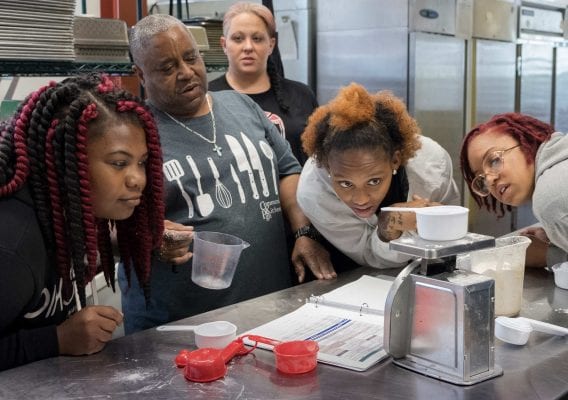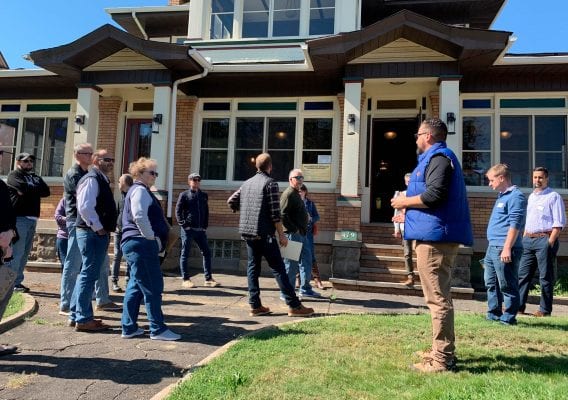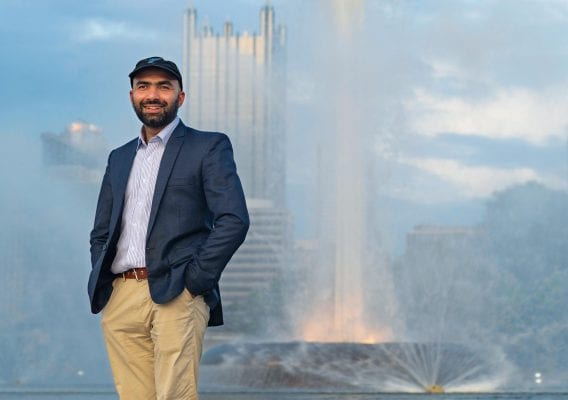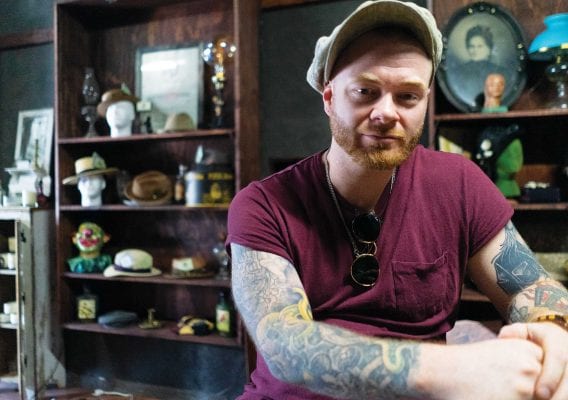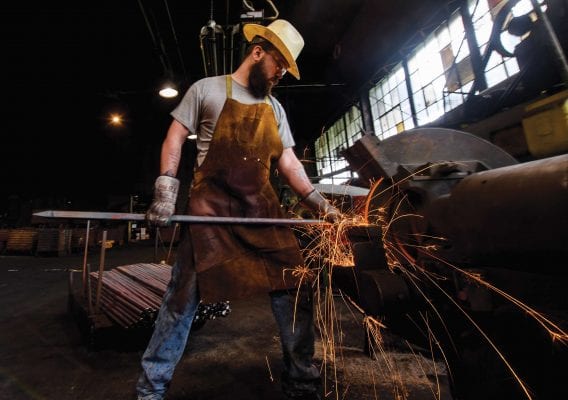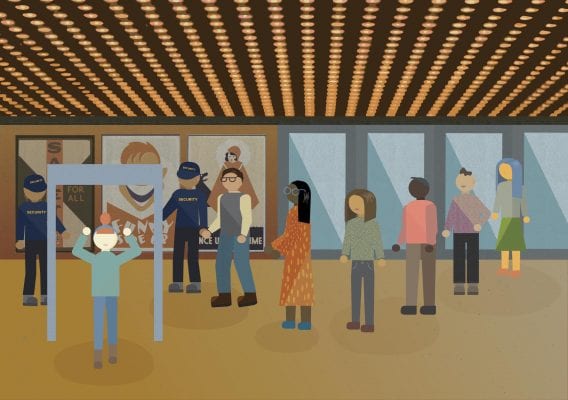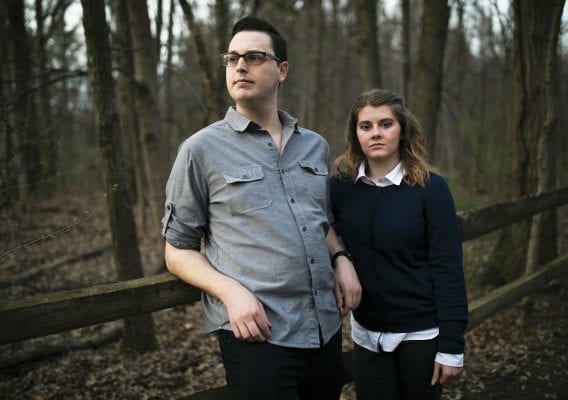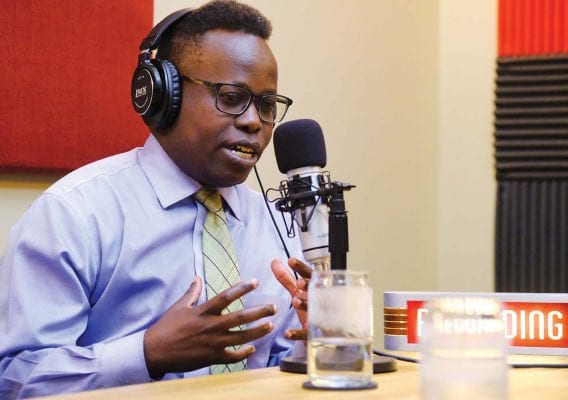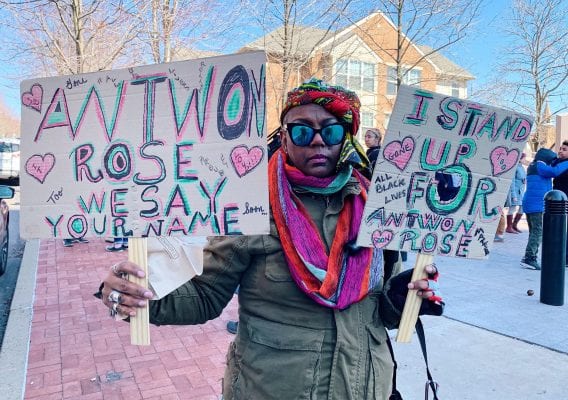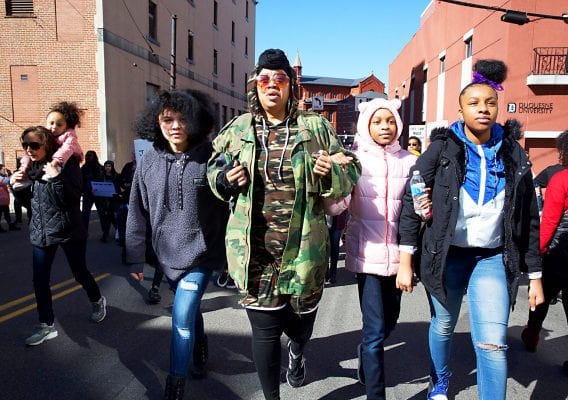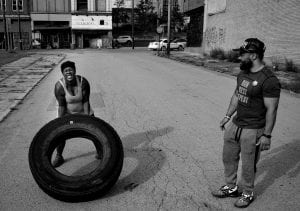Arthur Johnson
~
Arthur “Cetewayo” Johnson grew up in North Philadelphia. He remembers his neighborhood — despite poverty and the presence of low-level street gangs — as a nice place with community support. Johnson lost his mother at the age of 2, but cites his father, who provided him with a stable home life, as a role model. He was diagnosed with an intellectual disability in childhood. He admits his youth was fueled by a sense of rebellion, but he promised his father he would change.
“I lived basically a double life — one in the streets, and another life, when I’m with my family,” Johnson said. “As we got older, 16 and 17, the fights got more serious and deadly. I had promised my father I would get out of the gangs before I turned 18.”
Johnson said he lived up to that promise because he wanted to fulfill a dream he and his father shared — for him to enlist in the military.
“Since I was a little boy I have wanted to go into the military; that was my biggest dream in life,” Johnson said. “Me and my father used to watch military movies together; we use to talk about the military all the time, he served in the military.”
But Johnson never had the chance to follow in his father’s footsteps. Just two months after his 18th birthday, Johnson was arrested on October 6, 1970, for a gang fight killing. He maintains his innocence.
“I had already gotten out of the gang I was a member of,” Johnson said. “I was at home the whole evening. One of the guys who said he was involved in the killing pled guilty and was given seven to 20 years. He said I was not there, I had no involvement at all.” Arthur was convicted of homicide and sentenced to life without parole in 1971.
According to the Sentencing Project, a nonprofit organization that advocates for a fair criminal justice system, incarcerating a 16-year-old for life could carry costs of more than $2 million over the lifetime of just one prisoner.
Pennsylvania was a leader in life sentences for juveniles, with more than 500 incarcerated lifers who could be affected by the Miller and Montgomery rulings, according to Stephanie Singer, a student in the law-psychology program at Drexel University’s School of Law.
In her research, she recognized Pennsylvania had more of a responsibility than other states due to higher rates of incarceration of young offenders.
“Consequently, juvenile lifers in Pennsylvania should — after serving their current mandatory minimums — automatically be eligible for parole,” she wrote. “This solution addresses the unfairness that juvenile lifers are likely to face at resentencing without compromising public safety, promotes efficient use of resources, and remains consistent with the rehabilitative purpose of the juvenile justice system.”
This case could have a substantial effect on incarcerated Pennsylvanians. If the age of “juvenile” could include those up to 21, as neuroscience suggests, more than 1,000 people could be affected. More than 70 percent of the people serving these sentences in Pennsylvania are 40 or older.
“What that means is that you have aging and often rehabilitated men and women serving sentences for mistakes they made in their youth,” Grote said.
But only the Pennsylvania Supreme Court can bring about the change they seek. On April 1, Lee’s lawyers filed a petition for allowance of appeal with the court.
“If we win, we are seeking a remand through to the lower courts so that we can develop an evidentiary record and get a ruling in the first instance of whether Avis’ sentence is unconstitutional pursuant to the application of Miller v. Alabama,” Grote said.
If they were to win, they anticipate Allegheny County District Attorney Stephen Zappala would seek review before the U.S. Supreme Court. The District Attorney’s Office did not respond to a request for comment.
Despite the lengthy legal process, Grote remains engaged in trying to help prisoners like Lee, Pfender, and Johnson.
Before arriving in prison, Lee had dreams that many girls her age would find familiar.
“I wanted a boyfriend, to go to college, to have a career, and to not be poor,” she said.
After nearly four decades behind bars, dreams have faded into a single goal.
“The end goal is freedom, getting out of prison,” Grote said.







